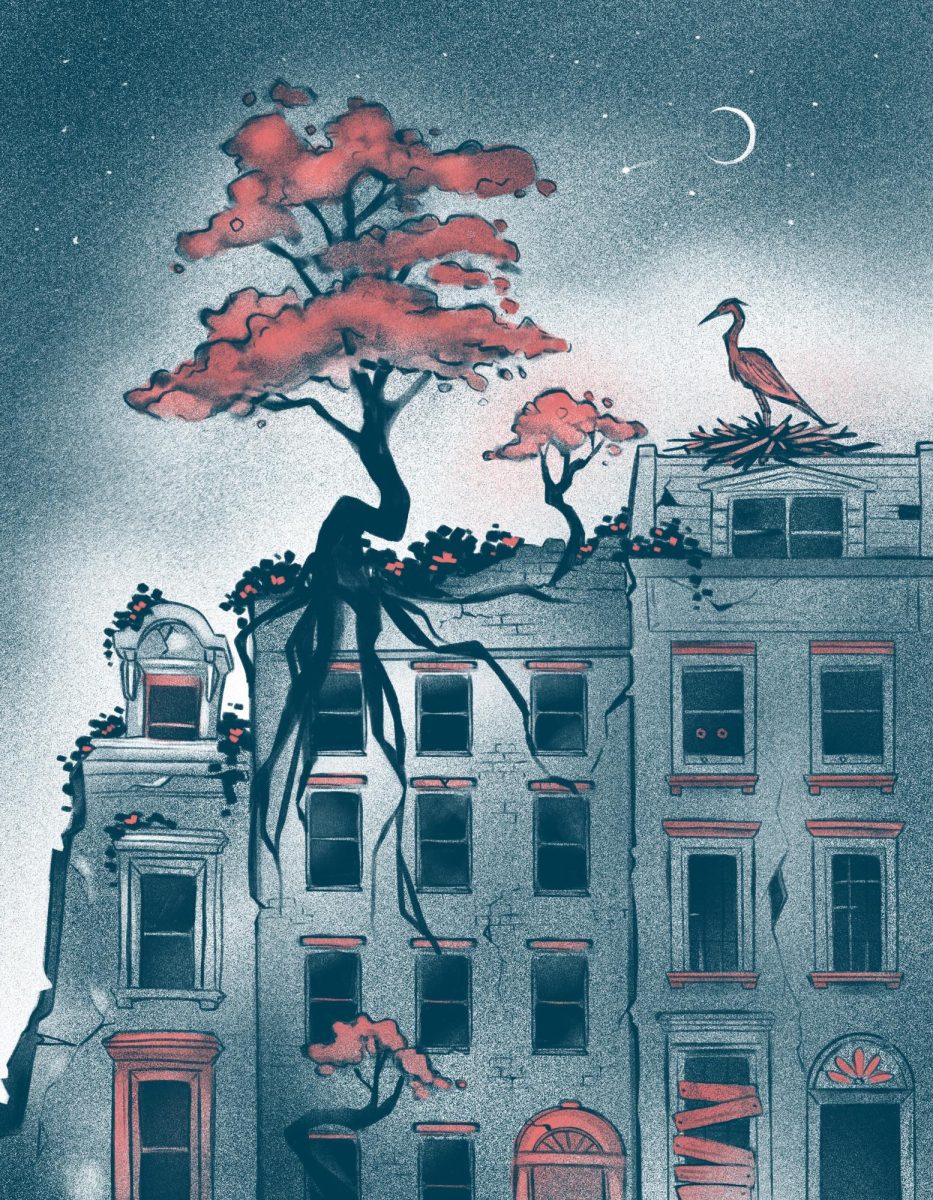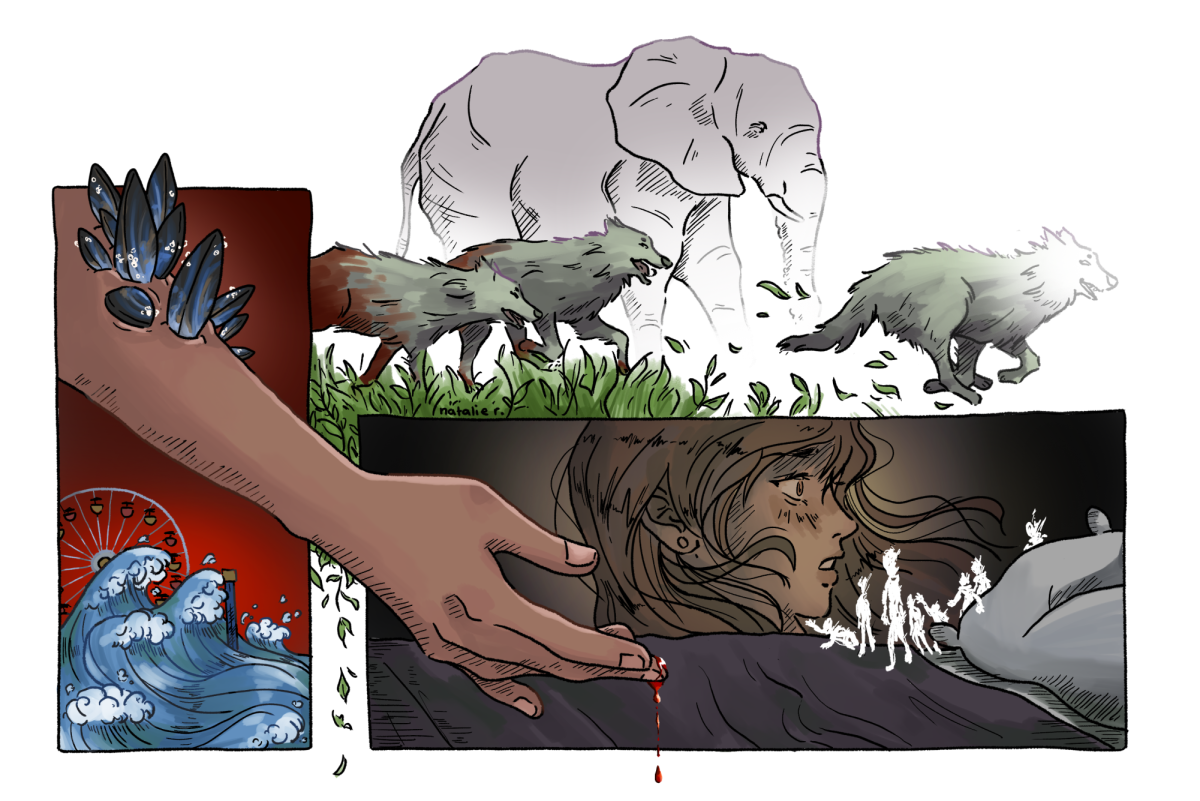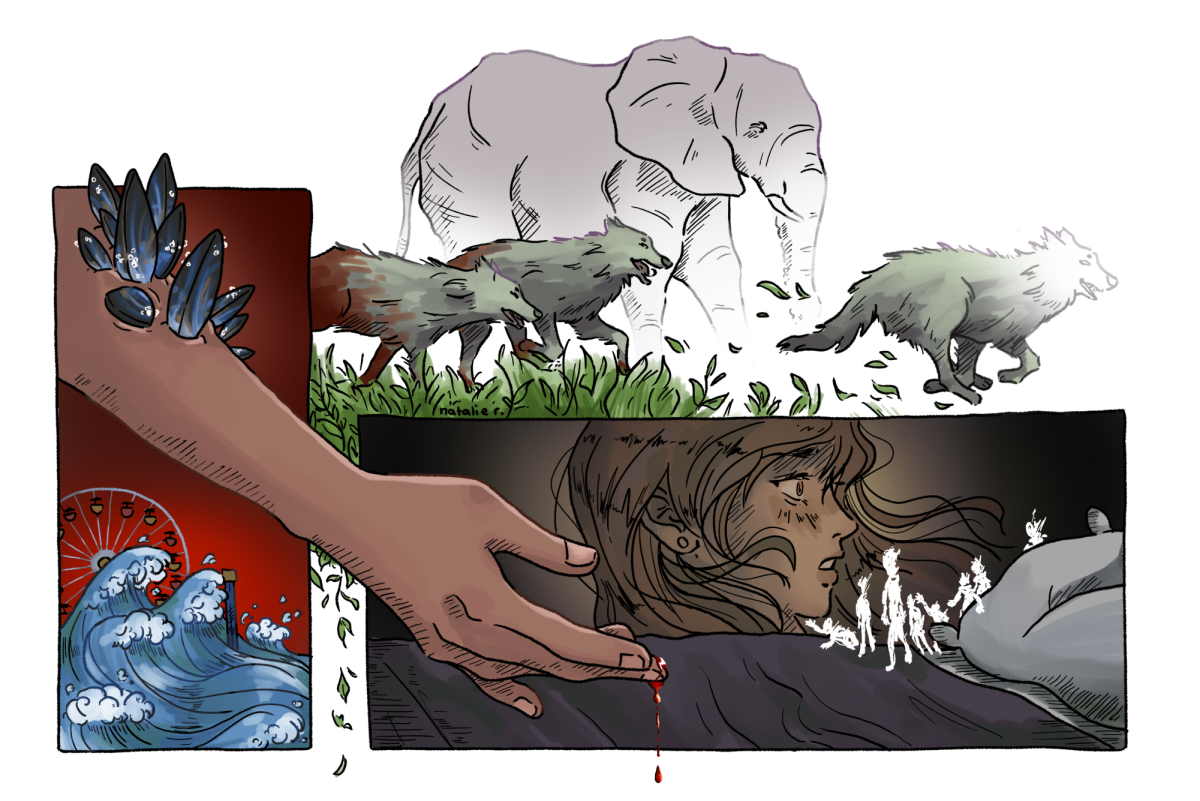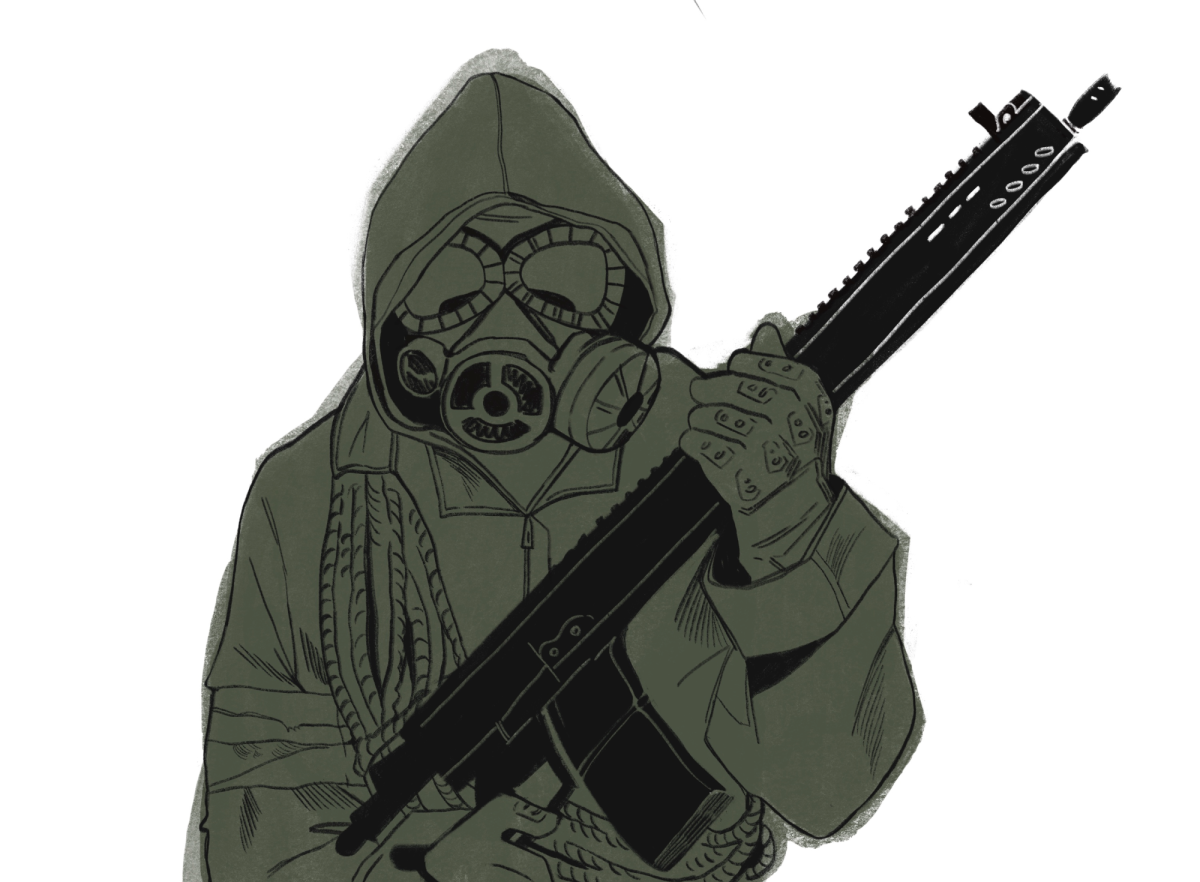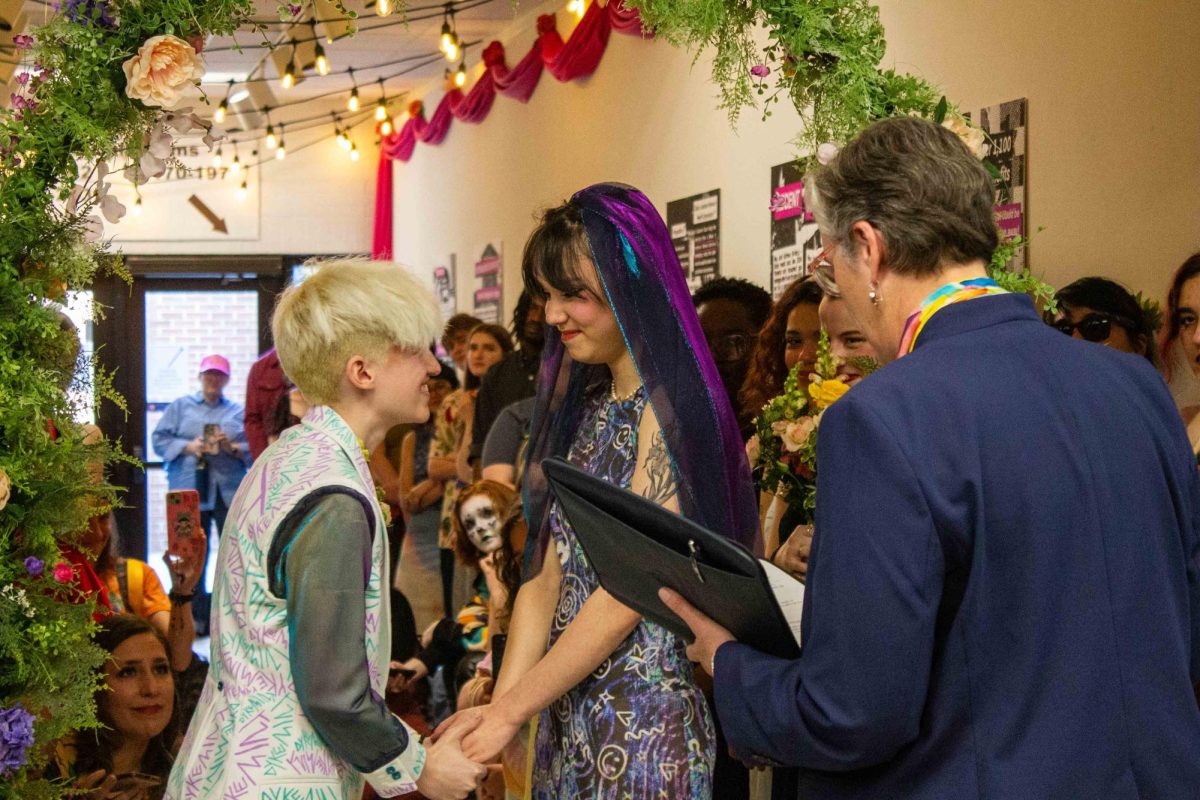Sporting bright pink beanies and dressing their dogs in pink T-shirts, about 260 people gathered in downtown Walla Walla on International Women’s Day, March 8, to march for women’s rights.
Known historically as International Working Women’s Day and recognized since the early 1900s, the protest aspect of the movement has carried on into the present day. However, it has acquired a new fighting spirit in recent years, focused primarily on bodily autonomy in light of the abortion restrictions in many states.
The poster advertising the protest encouraged people of different genders and ages to attend a March of Solidarity and Resistance and “tell the government to keep their bans off our bodies.”
Protest Co-Administrator Ren said that the march’s organization was relatively last-minute.
“[We noticed that] we [didn’t] have a women’s march in Walla Walla. We need[ed] a women’s march in Walla Walla,” Ren said.
Though the event planning was relatively streamlined, Ren and her co-organizers didn’t expect the numbers they received.
“[I am] thrilled. We got about 20 RSVPs on the official website, so we were expecting 20, maybe up to 50, just because not everyone goes through the step of RSVPing. I think this is more than 50,” Ren said.
The protesters began their route just after 11:05 a.m., marching east from Heritage Square to the First Congregational Church and then south to the Walla Walla District Court. Spanning multiple blocks, the crowd chanted “Women’s rights are human rights,” “No Trump, no KKK no fascist USA” and “Health care is a human right, not just for the rich and white” and displayed signs with messages like “Make America Sane Again” and “Girlypops Against Fascism.”
Protesters like Walla Walla resident Liz Jessee said that they were participating in support of women’s rights and in fear of the current political landscape and its implications.
“I’m here to support women’s rights, and I think it’s a very frightening time; I think we’re going in reverse as far as women’s rights and pro-choice and women having control over their own bodies. I’m also concerned about what we’re seeing with Trump and Elon Musk, and I don’t think this country is headed in the right direction right now. It’s rather alarming to me,” Jessee said.
Protest attendee Rosa expressed her frustration with what she saw as backward progress on women’s rights.
“I remember a time in 1974 when we [women] first got our rights to actually own property, our rights to get credit cards, and all those things. It’s not that far removed. And here we are, going back. How do our children and our grandchildren have [fewer] rights than we did 50 years ago?” Rosa said.
As a student, Whitman first-year Maddy Rokop said she wanted to be more involved in political changemaking.
“I’ve been trying to get more into activism, and I’m very passionate and very scared about the state of our country right now, so it felt right that I come out here and share that,” Rokop said.
As the march progressed down Main Street toward the courthouse, local business owners stood outside their buildings and smiled their approval at the crowd in a show of solidarity.
Though the protest was entirely peaceful, tensions were raised as the crowd filed into the grass lawn in front of the courthouse around 11:30 a.m. While protest leaders invited people to share words with the rest of the crowd, protesters became aware of Henry Contreras, known colloquially as the “chalk guy,” filming the proceedings. As he is notorious for chalking hate speech in downtown Walla Walla, many protesters began to take issue with his presence. People blocked Contreras off with their signs, and speakers told him point-blank “You’re not welcome here” and to “go away.” Several people took further action, attempting to get in the way of Contreras’ camera and non-physically herd him away from the area.
These efforts fell short, and two Walla Walla Police Department (WWPD) cars arrived on the scene at approximately 11:39 p.m. to settle the animosity, telling protesters that they could be sent to jail for touching Contreras in an attempt to force him to leave.
WWPD Sergeant Nat Small explained why officers got involved and elaborated on proper conduct for filming and free speech in a protest context.
“There was a disturbance. People are allowed to film in public; you can’t physically stop them or assault them… regardless of if you agree with them or not,” Small said.
Though Small acknowledged the potential attention-grabbing motive for filming a protest, he emphasized nonviolence.
“Sometimes people film to get a reaction, [and] obviously, that’s going to happen here, but you can’t threaten any violence,” Small said.
Perhaps recognizing the incongruity of advocating for democracy while attempting to force an individual out of the protest, speakers led a reversal of behavior toward Contreras. They pointed out that people were “giving him what he wants” by trying to prevent him from accessing the space and that “we all have a right to be here.” Eventually a chant of “We love Henry” was taken up.
Contreras remained for the duration of the march, filming the entire time. He had no comment on the protest.
Skirmish aside, the courtyard gathering was a time of community and inspiration. The crowd sang “This Land Is Your Land” by Woody Guthrie, and several speakers gave impassioned speeches, touching on everything from reproductive rights to the importance of behind-the-scenes community organization. The speakers were of all ages, from adolescents to older adults.
Ren appreciated the diverse age range of people at the march.
“I love, love seeing all of the different generations of people here and that it’s not just something that’s left to one group of people or another, that this many people care so much that they’re giving up their Saturday to… do something kind of uncomfortable and scary for a lot of people,” Ren said.
Perhaps the only underrepresented demographic at the march was Whitman students, of which there were few.
“I was kind of surprised to see that there were no Whitman students here… this is really important, and I think people need to keep getting out there and talking about it and educating about it,” Rokop said.
Overall, the march was an impressive display of support for women’s rights from the Walla Walla community. Jessee shared the message that she hoped the protest would send.
“I hope that this gets people’s attention and more people are cognitive that they’re not alone in this. …[Walla Walla is] a very conservative community, and most people know that, and they might be a little cautious about speaking out, [but] there’s a big community of people here to support them,” Jessee said.
At 12:05 p.m., the crowd made its way back to Heritage Square. Protesters were mostly disbanded by 12:20 p.m.

